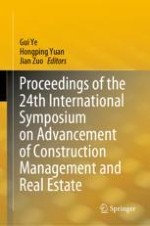2021 | OriginalPaper | Buchkapitel
Scheme Evaluation of Energy-Saving Renovation of Enclosure Structure of Long-Rent Apartment
verfasst von : Shenghan Li, Hongye Zheng
Erschienen in: Proceedings of the 24th International Symposium on Advancement of Construction Management and Real Estate
Verlag: Springer Singapore
Aktivieren Sie unsere intelligente Suche, um passende Fachinhalte oder Patente zu finden.
Wählen Sie Textabschnitte aus um mit Künstlicher Intelligenz passenden Patente zu finden. powered by
Markieren Sie Textabschnitte, um KI-gestützt weitere passende Inhalte zu finden. powered by
